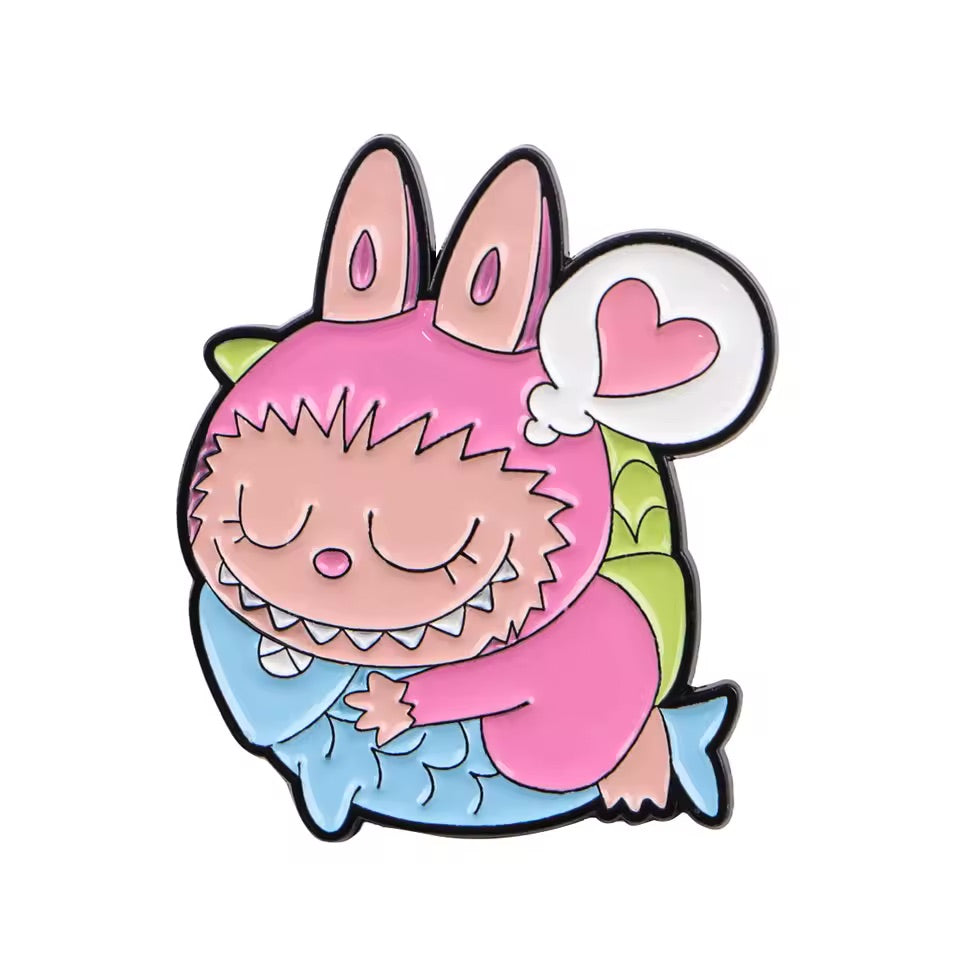The Hidden Mythology Behind Labubu: A Nordic Folk Monster Reborn

Labubu isn’t just a cute collectible—it’s rooted in deeper cultural symbolism, blending ancient Nordic myth with modern nostalgia. Let’s explore the folklore connection, character meaning, and why this little monster resonates so profoundly in today’s toy culture.
🌿 The Hidden Mythology Behind Labubu: A Nordic Folk Monster Reborn
Labubu isn’t just a cute collectible—it’s rooted in deeper cultural symbolism, blending ancient Nordic myth with modern nostalgia. Let’s explore the folklore connection, character meaning, and why this little monster resonates so profoundly in today’s toy culture.
🐾 Nordic Fairy Roots: Myth Meets Mischief
Artist Kasing Lung, a Dutch-raised Hong Kong illustrator, revealed Labubu’s design draws from Nordic folklore, including elves, forest sprites, and mythical beings from bedtime tales he heard as a child (bnnbloomberg.ca). In these myths, creatures like elves and kobolds were whimsical yet enigmatic—much like the blend of curiosity and mischief embodied by Labubu.
Pop Mart even describes Labubu as a “Nordic monkey-like forest elf” with pointed ears, serrated teeth, and big eyes—traits that invoke something both wild and charming (pandaily.com).
.
THE MONSTERS
In 2015, artist Kasing Lung introduced the world to LABUBU—a whimsical character born from his conceptual illustrations and brought to life in a series of enchanting picture books. These stories—The Story of Puca, Pato and the Girl, and Miró’s Requiem—each tell a unique tale, yet collectively form what is known as The Monsters Trilogy.
Every character in this trilogy stems from Lung’s vivid imagination, with distinctive appearances and personalities. Over time, these characters evolved into a broader universe of fantastical beings now known as THE MONSTERS, making them some of the most recognizable in Kasing Lung’s portfolio.
LABUBU
LABUBU is an elf-like creature created by Kasing Lung, first appearing in the picture book The Story of Puca. LABUBU lives deep in the forest, standing about as tall as a housecat, and is part of a troupe of nearly one hundred elves.
With a whimsical, curious nature, LABUBU is both mischievous and kind-hearted. Playful and cheeky yet optimistic, LABUBU embodies the wonder of childlike imagination. No one knows exactly when LABUBU was born, but legend suggests these ancient beings have roamed the forests for ages—perhaps even before the Jurassic period.
🌗 Symbolism: Ugly‑Cute with a Deeper Message
Labubu’s sharp teeth and wild hair might appear threatening at first—but its intent is “kind-hearted,” though mischievous . This contrast reflects duality in folklore—where creatures can be tricksters who ultimately help guide, protect, or teach.
Fans describe Labubu as “weird in just the right way”—a creature that embraces imperfection and emotional authenticity (reddit.com, pandaily.com). Labubu’s aesthetic shows that you don’t have to be polished to be lovable—a powerful symbol in an era fixated on perfection.
🛡️ Why the Myth Resonates Now
- Childhood Comfort – Labubu channels nostalgia and fantasy during turbulent times .
- Rebellious Identity – It flips cute culture by adding unexpected edge—sharp teeth, wild energy, and a hint of darkness (en.tmtpost.com).
- Emotional Utility – As people face modern pressures, Labubu emerges as a playful reminder to embrace all parts of ourselves—mischievous, awkward, and endearing (pandaily.com).
🎭 From Nordic Legend to Pop Icon
- 2015 – Kasing Lung illustrates Labubu in children’s picture books (The Monsters series), highlighting elf-like, folklore-inspired traits (popmartworld.com).
- 2019 – Collaboration with Pop Mart brings the character into vinyl and plush form, spreading its myth across the globe (knowyourmeme.com).
- 2024–2025 – Celebrity attention (like Blackpink’s Lisa), fashion runs, and high-stakes auctions (over $170K for life-sized pieces) secure Labubu’s status as a cultural and collectible phenomenon (as.com).
🌟 A Modern Myth for the Modern Collector
Labubu’s roots in Nordic folklore give it layers beyond plush: it’s a creature of duality—a trickster who charms, a forest spirit who sparks comfort, and a mythic being reinvented for today’s mobile, social consumer.
Embracing joy in the imperfect, Labubu invites us to celebrate a world where whimsy and edge can coexist, and where myth still matters in the palm of your hand.
ABOUT THE ARTIST
Kasing Lung was born in Hong Kong, China in 1972 and moved with his family to the Netherlands. In recent years, he has lived and worked between Belgium and Hong Kong.
After completing his studies, Lung devoted himself to creating picture books and became the first Chinese artist to win the European Picture Book Competition. In 2011, he began collaborating with renowned Hong Kong art toy brand How2work, bringing his illustrations into the world of collectible three-dimensional designer toys.
